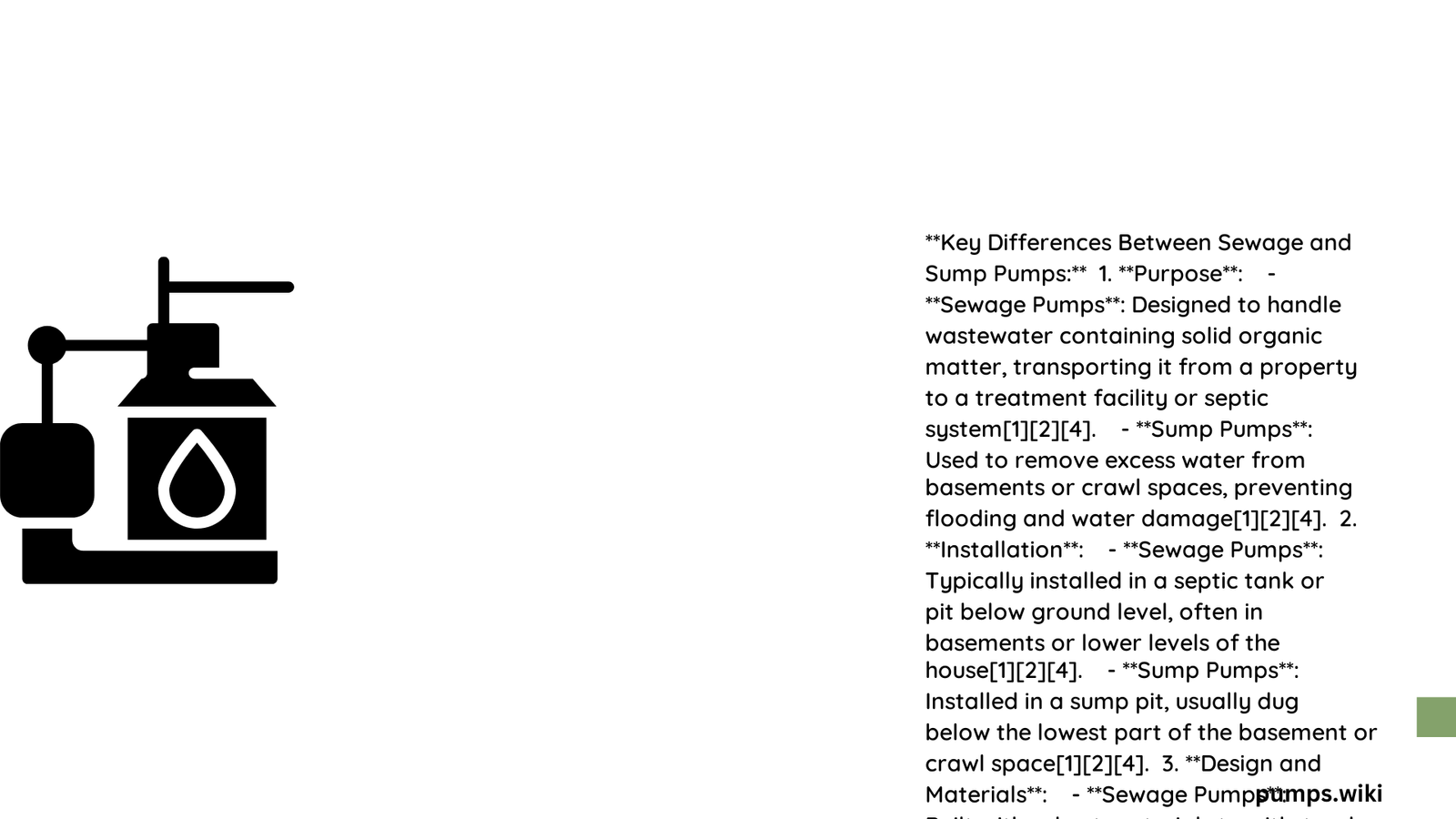Sewage and sump pumps serve distinct purposes in water management, with sewage pumps designed to handle solid waste and wastewater transportation, while sump pumps focus on preventing basement flooding by removing excess groundwater. Understanding their unique characteristics helps homeowners make informed decisions about water management and property protection.
What Are the Primary Functions of Sewage and Sump Pumps?
How Do Sewage Pumps Operate?
Sewage pumps are specialized systems engineered to manage waste and wastewater from residential and commercial properties. Their primary functions include:
- Transporting solid waste from bathrooms, kitchens, and laundry areas
- Pushing wastewater through pipes to septic systems or municipal sewer lines
- Breaking down solid particles using robust impeller mechanisms
| Feature | Sewage Pump Characteristics |
|---|---|
| Waste Type | Solid waste and wastewater |
| Installation Location | Sewage basins or dedicated pits |
| Pressure Capability | High-pressure transportation |
What Makes Sump Pumps Different?
Sump pumps specialize in water removal and flood prevention, with distinct operational characteristics:
- Automatically activate when water levels rise
- Remove clear or gray water from basement areas
- Prevent foundation water accumulation
- Redirect water away from building structures
Key Differences in Design and Purpose
Sewage Pump Specifics:
– Handles human waste and organic materials
– Requires sealed containment systems
– More complex mechanical design
– Professional installation recommended
Sump Pump Characteristics:
– Manages groundwater and rainwater
– Simpler mechanical structure
– Can be DIY installed
– Focuses on water displacement
When Should Homeowners Choose Each Pump?

Scenarios Requiring Sewage Pumps
Homeowners might need sewage pumps when:
– Living in areas with below-grade bathroom fixtures
– Experiencing gravity-defying waste transportation challenges
– Requiring consistent wastewater management
– Dealing with multi-story residential or commercial buildings
Scenarios Demanding Sump Pumps
Sump pumps become essential when:
– Basement experiences frequent water accumulation
– Property sits in flood-prone geographical regions
– Groundwater levels consistently threaten foundation integrity
– Preventing moisture-related structural damage
Cost and Maintenance Considerations
What Are the Financial Implications?
| Pump Type | Average Installation Cost | Maintenance Frequency |
|---|---|---|
| Sewage Pump | $2,300 | High |
| Sump Pump | $1,200 | Moderate |
How Complex Are Maintenance Requirements?
Sewage Pump Maintenance:
– Regular professional inspections
– Periodic impeller cleaning
– Seal and gasket replacement
– Comprehensive system checks
Sump Pump Maintenance:
– Annual cleaning
– Float switch examination
– Basic mechanical assessment
– Relatively straightforward servicing
Technical Performance Metrics
What Performance Capabilities Differentiate These Pumps?
Sewage pumps typically handle:
– Higher solid waste volumes
– More aggressive transportation requirements
– Complex waste management scenarios
Sump pumps excel in:
– Quick water displacement
– Automated moisture control
– Lightweight water management
Professional Recommendations
Experts suggest:
– Consulting professional plumbers for precise system selection
– Conducting periodic system assessments
– Understanding specific property water management needs
– Investing in quality equipment
Conclusion
Understanding the diff between sewage and sump pump ensures appropriate water management strategies, protecting property infrastructure and preventing potential damage.
